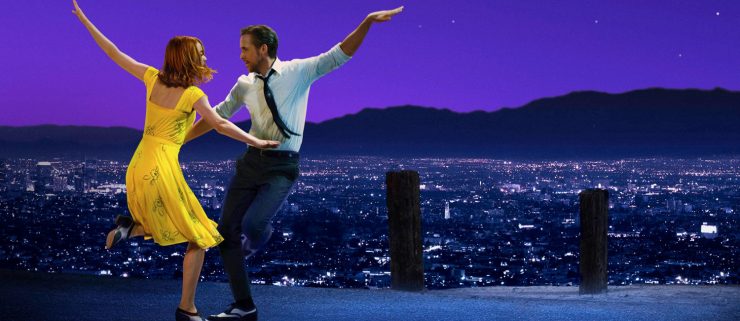Album Review: Justin Hurwitz – La La Land Soundtrack
Album Review: Justin Hurwitz - La La Land Soundtrack
In case you’ve been living under a rock for the last couple of months, La La Land is one of the films that has been generating serious Oscar buzz this year due to the way it’s resurrecting the musical genre. La La Land’s theme is about two artists who are striving to achieve their dreams in life: Sebastian (Ryan Gosling) a pianist who is deeply passionate about jazz and Mia (Emma Stone) who is an aspiring actress.
Justin Hurwitz is the composer who arranged all the big musical numbers behind La La Land. From the opening bars of Another Day of Sun with its jumping major chord progression and sensational hook, it immediately transports you back to the days of classic musicals such as 1952’s Singin’ in the Rain.
While the melody has an enthusiastic charisma to it, the subject is very grounded in reality as it discusses fulfilling your dreams “A technicolour world made out of music and machine/It called me to be on that screen and live inside each scene”.
With pop being associated with musicals, many genres are touched upon in the La La Land Soundtrack such as jazz, which can be heard through the massive brass sections in Someone In The Crowd. The track explores the reality of being talent spotted in order to become a successful artist “Someone in the crowd could be the one you need to know/The one to finally lift you off the ground”. A wonderful aspect that musicals achieve over most genres is that they can implement a diverse range of instruments. This is most noticeable when the flute is isolated in the mix in order to intensely build up to the track’s crescendo in the final chorus.
Mia & Sebastian’s Theme is the heart and soul of the musical where this piece of music brings together our two artists for the first time. The theme has both undeniably charming and melancholic qualities to it where you can almost hear the classical influences of Frédéric Chopin & Sergei Rachmaninoff seeping in the delicate piano playing.
A Lovely Night is probably the stand out song and film sequence in La La Land where it sees Mia & Sebastian singing against a backdrop of a gorgeous skyline in Los Angeles. While A Lovely Night has a playful nature and brilliant musical nuances such as the key change when Mia takes the lead in singing, it is also underpinned by hilarious and sarcastic jabs between the two characters “Some other girl and guy would love this swirling sky/But there’s only you and I/And we’ve got no shot”. Sebastian observes that the skyline he and Mia have stumbled upon is wasted on the both of them since a romantic couple would appreciate the view more.
While A Lovely Night has a playful nature and brilliant musical nuances such as the key change when Mia takes the lead in singing, it is also underpinned by hilarious and sarcastic jabs between the two characters.
From the sizzling drum cymbal groove that’s found in Herman’s Habit, the track epitomises everything that’s wonderfully complex about jazz. This can be heard through the wide range of polyphonic musical textures it has to offer where pianos and trumpets are consistently conflicting and re-arranging their melodies in order to interlock with one another.
Planetarium is an instrumental in the form of a waltz. The track has musical similarities to Johann Strauss II’s The Blue Danube following the conventional ¾ time signature. The use of instruments such as flutes, harps and clarinets perfectly captures the innocent and romantic nature of Mia & Sebastian’s relationship. Once the warm and elegant orchestration comes in you can even imagine the likes of the iconic dance duet Fred Astaire & Ginger Rogers waltzing in a ballroom in the 1940’s.
In conclusion, Justin Hurwitz achieved a lot with the La La Land Soundtrack as he managed to incorporate a variety of musical flavours ranging from pop to jazz. He also harnessed a technique that is commonly found in musicals and classical music which is the way some songs revisit the musical structures from other tracks. For example Planetarium has similar features to Mia & Sebastian’s Theme and as a result of this Hurwitz manages to adjust the emotion of these tracks to either make them sonically optimistic or melancholic.
The Breakdown | Album Review: Justin Hurwitz – La La Land Soundtrack
Charming
La La Land’s soundtrack is filled with big and beaming catchy musical numbers, which will leave you wishing that you were cast in the film just so you could sing and dance along to these dazzling show tunes.













